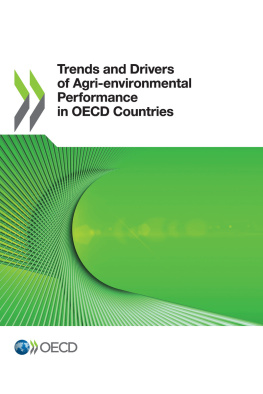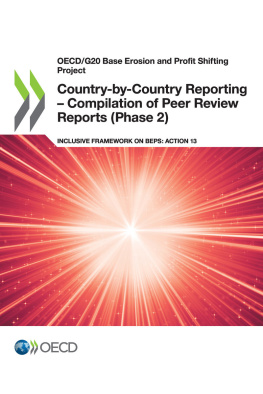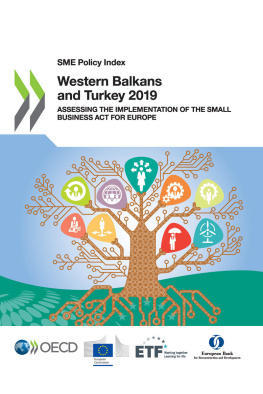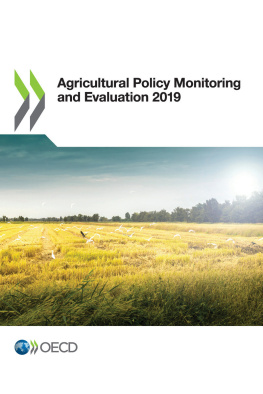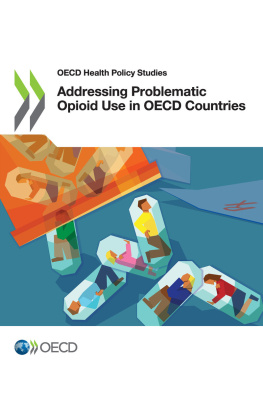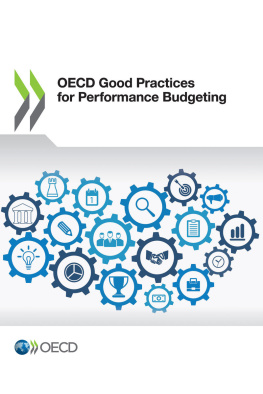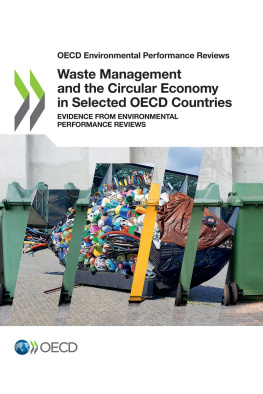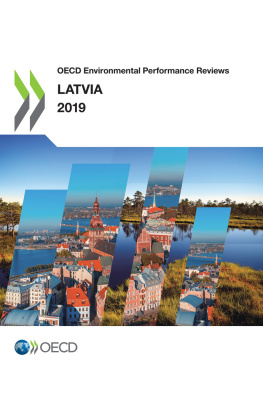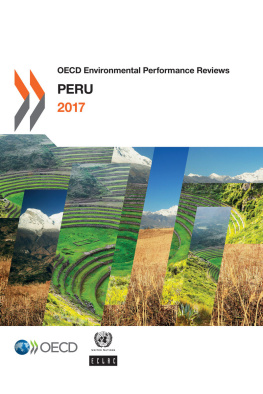OECD - Trends and Drivers of Agri-environmental Performance in OECD Countries
Here you can read online OECD - Trends and Drivers of Agri-environmental Performance in OECD Countries full text of the book (entire story) in english for free. Download pdf and epub, get meaning, cover and reviews about this ebook. year: 2019, publisher: OECD Publishing, genre: Politics. Description of the work, (preface) as well as reviews are available. Best literature library LitArk.com created for fans of good reading and offers a wide selection of genres:
Romance novel
Science fiction
Adventure
Detective
Science
History
Home and family
Prose
Art
Politics
Computer
Non-fiction
Religion
Business
Children
Humor
Choose a favorite category and find really read worthwhile books. Enjoy immersion in the world of imagination, feel the emotions of the characters or learn something new for yourself, make an fascinating discovery.
Trends and Drivers of Agri-environmental Performance in OECD Countries: summary, description and annotation
We offer to read an annotation, description, summary or preface (depends on what the author of the book "Trends and Drivers of Agri-environmental Performance in OECD Countries" wrote himself). If you haven't found the necessary information about the book — write in the comments, we will try to find it.
OECD: author's other books
Who wrote Trends and Drivers of Agri-environmental Performance in OECD Countries? Find out the surname, the name of the author of the book and a list of all author's works by series.
Trends and Drivers of Agri-environmental Performance in OECD Countries — read online for free the complete book (whole text) full work
Below is the text of the book, divided by pages. System saving the place of the last page read, allows you to conveniently read the book "Trends and Drivers of Agri-environmental Performance in OECD Countries" online for free, without having to search again every time where you left off. Put a bookmark, and you can go to the page where you finished reading at any time.
Font size:
Interval:
Bookmark:
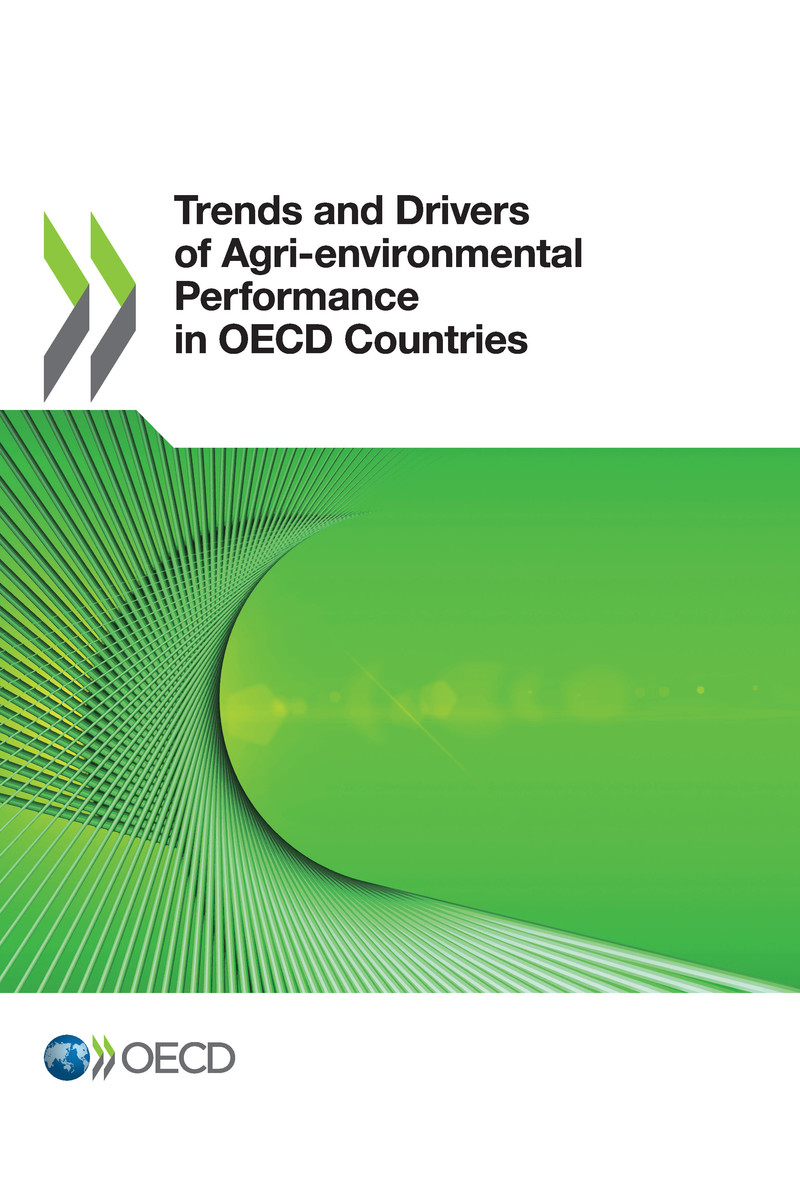
OECD (2019), Trends and Drivers of Agri-environmental Performance in OECD Countries , OECD Publishing, Paris, https://doi.org/10.1787/b59b1142-en .
Agriculture is facing a key challenge in reducing its impact on the environment, including preserving vital natural resources such as soil and water. For more than 20 years, the OECD has been tracking the agriculture sectors environmental impact, collecting information against more than 60 agri-environmental indicators (AEIs) in its member countries. Over time, this geographical coverage has expanded to include Argentina, Brazil, Bulgaria, the Peoples Republic of China, Colombia, Costa Rica, Croatia, Cyprus, Indonesia, India, Kazakhstan, Malta, the Philippines, Romania, Russian Federation, South Africa, Ukraine, and Viet Nam.
This report updates the data published in the 2015 OECD Compendium of Agri-environmental Indicators to present a summary of the environmental performance of agriculture in OECD countries as of end-2015. The report also includes new and innovative material to further strengthen its relevance as a reference document. In particular, the four thematic chapters each cover a targeted set of indicators for which data coverage is generally more consistent across time in OECD countries and that capture the main pressures agriculture exerts on the environment. Chapter 1 focuses on the interlinked issues of land use, pesticides and farmland birds; Chapter 2 covers ammonia and greenhouse gas emissions, the main air pollutants from agricultural activities; Chapter 3 is dedicated to nitrogen and phosphorus balances, two indicators that signal air and water pollution; and Chapter 4 focuses on water use and irrigation.
In addition to summarising the main trends in these selected AEIs, each chapter also identifies the main drivers of the observed trends based, for Chapters 1 to 3, on econometric analyses using the OECD AEIs.
The report recognises the difficulties in developing a comparative set of agri-environmental indicators given that methodologies to measure indicators are not well established in all cases and may differ across countries. National-level data can conceal significant ranges, reflecting local site-specific values, and year-to-year variations in the value of indicators may reflect weather variability. To minimise these problems, the report focuses on long-term trends and supports the findings with empirical evidence from the literature.
Finally, all chapters discuss country cases and distil policy lessons on how to improve the environmental performance of the agriculture sector.
This report was declassified by the OECD Joint Working Party on Agriculture and the Environment (JWPAE), of the OECD Committee for Agriculture and the OECD Environment Policy Committee.
The OECD wishes to thanks its member countries for their collaboration and contributions in the preparation of this report, in particular through the provision of data and expert comments on the text. The very useful information provided by Ebba Barany from Eurostat and Panos Panagos from the Joint Research Centre; the European Bird Census Council; the Food and Agriculture Organization of the United Nations (FAO); the UN Environment Programme; and the UN Framework Convention on Climate Change are also appreciated.
The principal author of this report is Santiago Guerrero, Policy Analyst in the Agriculture and Resources Policies Division of the OECD Trade and Agriculture Directorate. The following analysts co-authored Chapters 1, 2, 3 and 4 respectively: Alea Muoz, Maho Nakagawa, Ivn Tzuntzn, and Julien Hardelin. Many colleagues from the Trade and Agriculture Directorate and the Environment Directorate also contributed to this report, in particular Franck Jesus, Guillaume Grure, Dimitris Diakosavvas, Katia Karousakis, and Will Symes. This report also benefitted from the statistical assistance of Noura Takrouri-Jolly, Karine Souvanheuane, and Vronique de Saint-Martin. Michle Patterson prepared this report for publication and Theresa Poincet provided administrative support.
The environmental performance of the agriculture sector registered some improvement in OECD countries during the period 2003-15, notwithstanding some signs of stagnation in particular areas. The majority of OECD countries saw decreasing trends in ammonia emissions, phosphorus surplus and water abstraction rates. Results were more mixed for nitrogen balances, which, while declining on average, nevertheless, increased in several countries, including in some with already high nitrogen surplus levels. A lack of progress was also observed in reducing greenhouse gas emissions and on improving biodiversity on farmland. Greenhouse gas emissions increased slightly in the OECD region, while the farmland birds indicator, the main OECD indicator used to track biodiversity on farmland, continued to decline in the majority of countries for which monitoring was undertaken. Overall, improvements in the environmental performance of the agricultural sector slowed down during the period 2003-15, relative to the pace observed over the period 1993-2005.
Font size:
Interval:
Bookmark:
Similar books «Trends and Drivers of Agri-environmental Performance in OECD Countries»
Look at similar books to Trends and Drivers of Agri-environmental Performance in OECD Countries. We have selected literature similar in name and meaning in the hope of providing readers with more options to find new, interesting, not yet read works.
Discussion, reviews of the book Trends and Drivers of Agri-environmental Performance in OECD Countries and just readers' own opinions. Leave your comments, write what you think about the work, its meaning or the main characters. Specify what exactly you liked and what you didn't like, and why you think so.

